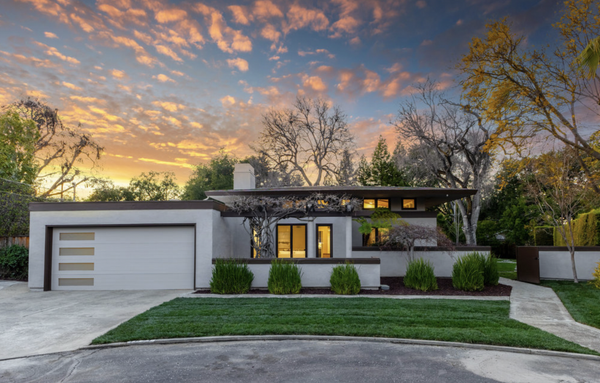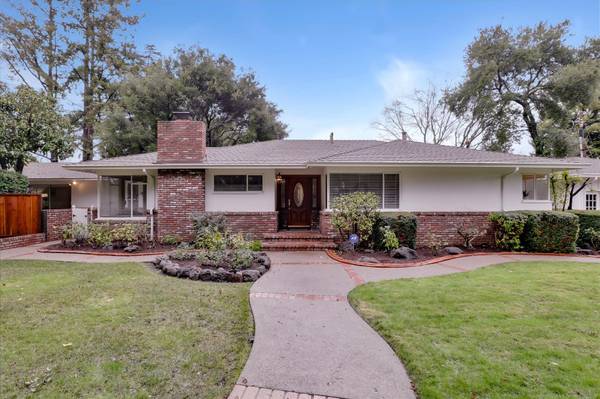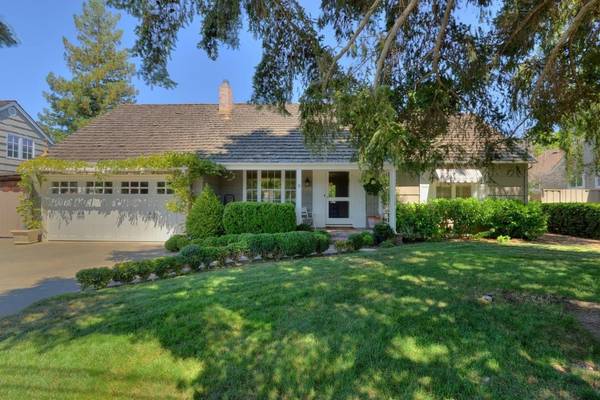LOYOLA CORNERS
Located in south Los Altos, Loyola Corners is located about 10 minutes from the new Apple Campus and 15 minutes from the Googleplex in Mountain View. Loyola Corners got its name from the Jesuits at Santa Clara University who purchased the land in 1904 and started out as a train stop for the Southern Pacific Railway, but when the city incorporated in 1952, attention shifted north to building up the city's downtown business district as well as the newly built Rancho Shopping center. Once out of the spotlight, Loyola Corners remained relatively unchanged in the following decades, and the residential neighborhood that grew around the former station retained that rural feel from the city's earlier era.
Bounded by Clinton Road and Fremont and Miramonte avenues, the triangular-shaped neighborhood is like a compact town with its own shopping district, anchored by Tom’s depot, Cafe Vitale, The Bicycle Outfitter, as well as a post office and a cluster of medical offices. The residential streets that wind through the neighborhood resemble wide country roads with no sidewalks and lots of low-hanging trees. What also makes Loyola Corners truly special is the three parks that are within walking distance, Marymeade, Heritage Oaks, and McKenzie Parks. Loyola Corners truly feels like a vintage neighborhood shopping district from the 1950’s with no chain stores on site, the Boyenga Team hope it retains its charming appeal.

Loyola Corners got its name from the Jesuits at Santa Clara University. In 1904, they purchased 650 acres of the Hale Ranch, adjoining and northward from Permanente Creek, for a new college, to be named after their founder, Saint Ignatius of Loyola. They built some roads and had plans to build ten buildings, plus a diary/creamery.
At this same time, developer Paul Shoup"s Southern Pacific Railroad was planning stops for its new line. Foreseeing potential passengers to and from the new college, the railroad put a stop at the location they named Loyola Corners. However, the university ran into financial trouble. Many construction-related pledges were canceled as a result of the losses from the 1906 earthquake. The school tried to complete the plan for years, but finally had to give up the dream. In 1923, they sold the land to Los Altos Country Club Properties for $250,000.
This organization laid out 155 acres for the Los Altos Golf & Country Club. The rest, they subdivided for homes. After 1929, the Great Depression slowed all development. Eventually, nearly all the lots were subdivided at least once more.
The post-World War II housing boom affected Loyola Corners, where the many new houses led to expansion of its business district.
The halcyon times did not last long. A black day in Loyola Corners prosperity occurred in 1951 when the new, state-of-the-art Rancho Shopping Center opened with 30 shops. It provided heavy competition at once.
Regular passenger service on the railroad ended in 1958. At the time, plans were drawn to use the railroad right-of-way for Interstate 280. This plan was shot down. Instead, after the last freight train and a final nostalgic passenger train passed through in 1964, construction of the Foothill Expressway began immediately.
In the following years, Safeway, came and went along with The Echo, and many other of the small businesses, what still anchors the nighborhood is Tom's Depot which has stood the test of time. To find out more about Loyola Corners.



6 Properties Available
- Los Altos Real Estate Listings
- Los Altos Hills Real Estate Listings
- Los Gatos Real Estate Listings
- Palo Alto Real Estate Listings
- Menlo Park Real Estate Listings
- Portola Valley Real Estate Listings
- Sunnyvale Real Estate Listings
- San Jose Real Estate Listings
- Mountain View Real Estate Listings
- Santa Clara Real Estate Listings
- Redwood CIty Real Estate Listings
- Saratoga Real Estate Listings
CONTACT













